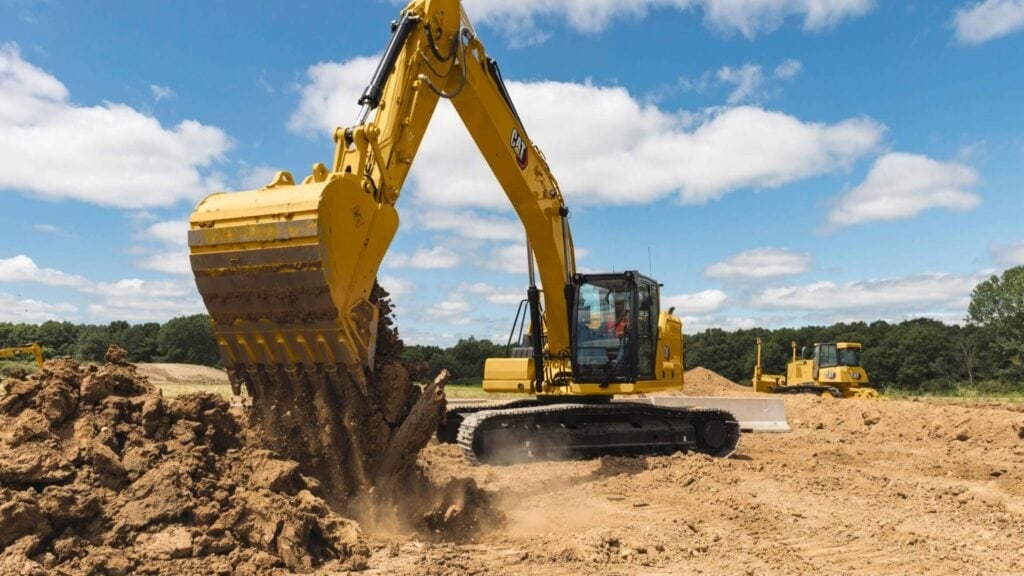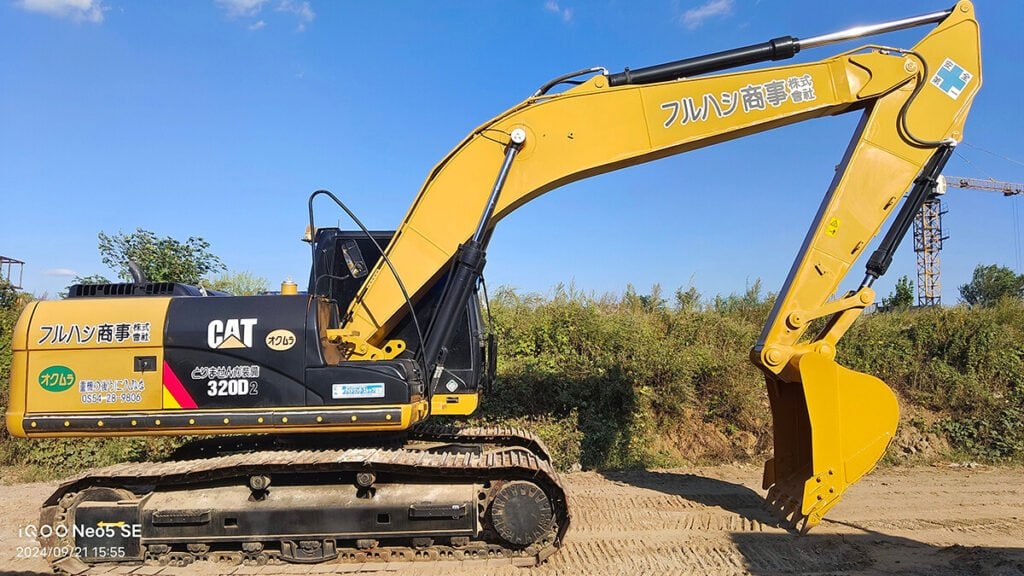Opting for the wrong size of excavator will hit you hard in the pocket, delay your project, and potentially ruin your efficiency. I’d like you to please discover how to avoid these expensive and time-consuming errors.
To choose the right excavador size, evaluate digging depth, lifting needs, site access, and job type. Match these to mini (0–6 tons), midi (6–10 tons), standard (10–45 tons), or large (45+ tons) classes. Consider your attachments, job frequency, and terrain for optimal results.
Let’s delve into each size of excavator to find the perfect fit for the type of work you want to do and the technical specifications you require.

How Do I Determine What Size Excavator I Need?
Selecting the right size excavator for you is a matter of assessing the conditions of your jobsite and understanding what you want to achieve with your project. There’s no one-size-fits-all answer.
Start with the digging depth, dump height, and lifting capability you require. If you are working in more confined spaces, you want a smaller machine. If you are working in open areas, you can step up in tonnage. For each job you do, you need a certain amount of horsepower, a certain reach, and so on.
The industry uses four common size classes:
- Mini excavator (0–6 tons) – tight spaces, landscaping
- Midi excavator (6–10 tons) – urban construction, roadworks
- Standard excavator (10–45 tons) – commercial or heavy-duty sites
- Large excavator (45+ tons) – mining, massive excavation
Reference charts like CAT excavator size chart, Hitachi excavator size chart, and Komatsu excavator size chart to narrow down your choices.

What Is The Most Popular Size Excavator?
Most contractors like 20-ton excavators, specifically the CAT 320 excavator class. The reason is, they are a good mix of performance, price, and transportability.
The 20-ton excavator is the workhorse of commercial construction and infrastructure projects. It comes with enough power to dig, lift, and trench while still being relatively easy to move around.
The CAT 320 is the number one-selling unit worldwide, and it’s the same story with the equivalent models from Komatsu, Volvo, and so on. Whether you are looking for a CAT 320 excavator for sale or a 20000 lb excavator for sale, the 20-ton excavator size class delivers a good return on investment.
What Is The Most Versatile Excavator Size?
If you need something more versatile, you could go for the midi excavator, which usually runs from 6 to 10 tons. It’s small enough that you can get around with it, but it’s also beefy enough to do some good-sized work.
The midi excavator is ideal for small commercial and residential applications. It fits in between the tight space of the mini excavators and the bigger, heavier machines. From Kubota to GATO to Komatsu to Bobcat, all these guys are really big in the midi range.
Many contractors think the midi range is the best mid size excavator for being able to adapt to pretty much anything. If you want, get the midi excavator specs, look up bobcat excavator sizes, and do your kubota excavator size chart search and see what fits for you. The CAT 308 excavator, 60G excavator, and the CAT 315 for sale are all popular machines in this “do-it-all” segment.

Is A CAT 320 A 20 Ton Excavator?
Yes, the CAT 320 is the 20-ton excavator. It’s a bread-and-butter machine that you will see all over the world on infrastructure and earthmoving jobs.
A typical weight for the CAT 320 comes in at about 21 tons or 46,000 pounds. It’s one of the more dependable and sought after in that category. It boasts good digging force, smooth hydraulics, and it’s very fuel efficient.
And that’s reflected in both the new market and the used market. When you’re buying these from China, the CAT 320 excavator for sale is a big item for people in Peru, Africa, the Middle East, and basically around the world. Look at the cat excavator sizes. Look at an excavator size comparison, and see if it’s the right fit for you.
What Size Is A 10 Ton Excavator?
A 10-ton excavator sits at the upper end of the midi excavator class. It’s got more power than just a mini, but it still has a lot of the same agility and maneuverability.
These machines will usually have a digging depth of 14 to 16 feet and a width probably in that 7- to 8-foot range. Great for utilities, great for people doing trenching, great for housing foundations and commercial site prep.
Examples could include looking at the Hitachi excavator sizes, maybe the SANY excavator price range, the Bobcat mini-excavator sizes, or Volvo excavator sizes. You can look at a mini-excavator size chart, or you can look at an excavator weight guide. That way you can compare these things side by side.

What Is A 20 Ton Excavator?
That is what this 20-ton excavator represents. It’s truly the core of the standard size category. It’s known for balance, power versus transport ability versus fuel consumption.
It can lift over 4,000 pounds, dig 22 feet deep, and it’s going to be able to carry a bucket anywhere from .8 to 1.5 cubic yards. Great for trenching, great for mass excavation, great for lifting pipe or panel.
Explore cat excavator size, excavator bucket sizes chart, and excavator bucket pins and bushings for compatibility. Popular models include the CAT 320F, Komatsu PC200, and SANY SY215.
What Size Is A 30 Ton Excavator?
Thirty-ton excavators are large enough for quarrying, demolition, and heavy construction. Typically weighing around 66,000 lbs, these beasts offer bucket capacities up to 2.0 cubic yards. You usually need skilled operators and somebody with a really big gooseneck trailer to move these around.
They represent the threshold into excavator big size territory and are widely used in infrastructure megaprojects. Check cat 330 excavator for sale or compare Hitachi, Komatsu, and CAT 30-ton specs.

How Big Is A 50 Excavator?
A 50-ton machine is clearly in the large-size excavator category. These are massive, powerful machines built for some serious work.
These machines are huge. With an operating weight over 110,000 lbs, these are the guys that do your mining, dam building and harbor dredging. When I think of big iron, I think of the CAT 390F, Hitachi ZX470, and Komatsu PC490.
Check your specifications when it comes to the size guide, model specs, track size chart, and battery size chart. Use your bucket size and excavator size chart. Look at cat 390f specs and cat 390 long reach excavators or case excavator sizes. Make sure these specs work for your needs and you can get the type of production you need when you’re spending money.
Is 3000 Hours A Lot For A Mini Excavator?
Not necessarily. A well-maintained mini may run 3000 hours, and if you really take care of it, it may run 5000 hours.
Look hard at the service history, oil analysis, and the hydraulic system. If you find a CAT 308D for sale with a low-hour engine or a Kubota mini excavator for sale with a low-hour engine, those are great machines to take a look at.
You’ll also want to take a look at the excavator bucket, the under carriage and the swing motors. You also want to think about wear parts. Typically, after about 3000 hours, you need to start thinking about checking your pins and bushings in your bucket.

What Size Excavator Do I Need To Lift 4000 lbs?
If you’re going to pick something up that weighs 4000 pounds, you’re going to need at least a 20-ton excavator.
People often think their 5-ton mini machine can handle that, but it can’t. You need a midsize to standard excavator with a high hydraulic flow and you’ve got to look at the lift capacity chart. You also want to look at the excavator bucket size chart as well as the lifting chart from the OEM.
Just go back and look at your excavator types and sizes, excavator size classes, and capacity of excavator per hour. Make sure you get the right machine for the job.
Resumen
Excavator sizing isn’t guesswork, guys. Use this guide. If you have any questions or need help sourcing an excavator? Talk to us. We’re ready to help you and help you with our picks for the best excavator for sale.